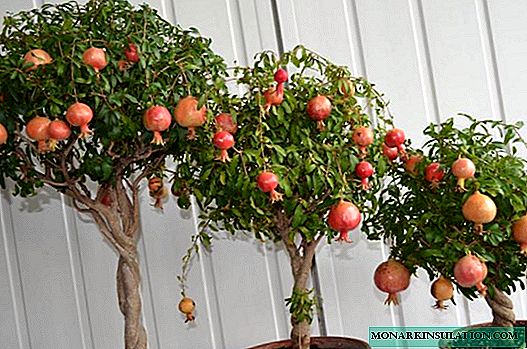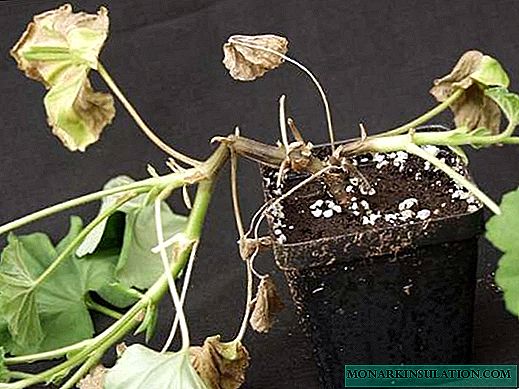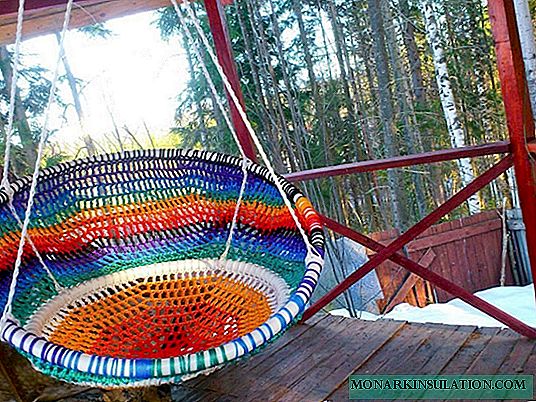
It is unlikely that you can meet a person who would not feel like hanging out in a comfortable chair and feeling the smooth swaying movements of a suspended structure. Comfortable swings and hammocks have always been very popular. Today, a number of hanging seats has been significantly expanded: hanging sofas and armchairs decorate many suburban areas, easily fitting into landscape design.
The basis for the manufacture of suspended seats were the usual rocking chairs. Wicker structures made of rattan or vines became the most promising for furniture experiments, because they weigh quite a bit, but at the same time they have excellent strength.

As a result of such furniture experiments, designers created hanging chairs that resembled half a ball in shape
Semicircular structures are attractive in that they allow you to evenly distribute the entire load. In addition, they are conveniently suspended by installing the device at the highest point.
The frame of the hanging seats can have several options.

Wicker chairs made of twigs, rattan, transparent acrylic or plastic have a rigid body. For convenience, they are complemented by decorative pillows and soft mattresses.

The hammock chair is a softer version of the hanging structure. On swaying soft pillows you can always pamper yourself in moments of relaxed relaxation

The cocoon chair closed on three sides with wicker walls is ideal to retire and abstract from the outside fuss
Instead of traditional rattan or vines, the design of hanging chairs is increasingly using synthetic materials, due to which the structures become lighter, more flexible and quieter.
There are many options, as you can see. We will specifically analyze 2 examples.
Hanging hammock chair
To build such a chair is not difficult. It is only necessary to master the basic technique of weaving macramé.

Such a hanging chair will allow you to create a special atmosphere on the site, conducive to peace and tranquility.
To make a chair we need:
- Two metal hoops of different diameters (for sitting D = 70 cm, for the back D = 110 cm);
- 900 meters of cord for weaving;
- 12 meters sling;
- 2 thick cords for connecting rings;
- 2 wooden rods;
- Scissors, tape measure;
- Work gloves.
For the arrangement of the chair, it is better to use hoops made of metal-plastic pipes having a cross section of 35 mm. Plastic pipes of this thickness have a metal braid inside and are able to provide sufficient strength to the suspension structure.
To make a hoop from a pipe, we first determine the length of the segment using the formula S = 3.14xD, where S is the length of the pipe, D is the required diameter of the hoop. For example: to make a hoop D = 110 cm, you need to measure 110х3.14 = 345 cm of pipe.

To connect the ends of the pipes, wooden or plastic inner inserts of the appropriate diameter are perfect, which can be fixed with ordinary screws
For weaving, a polyamide cord with a polypropylene core 4 mm thick, which can be purchased at a hardware store, is ideal. It is good because it has a soft surface, but unlike cotton fibers, when knitting, it is able to create denser knots that do not "spill" during operation. In order to avoid discrepancies in the color and texture of the material, it is advisable to purchase the entire volume of the cord immediately.
Stage # 1 - Creating Hoops for the Hoops
Our task is to completely cover the metal surface of the hoops. For the design of 1 meter of hoop in tight turns, about 40 meters of the cord go. We do the turns slowly with good tension, laying the cord evenly and neatly.
To make the winding denser, tighten every 20 turns, tightening them in the direction of the winding until they stop. As a result, we should get a smooth and dense braid surface. And yes, to protect your hands from corns, this work is best done with gloves.
Stage # 2 - netting
When creating a grid, you can use any attracted macramé pattern. The easiest way to take as a basis is a “chess” with flat knots.

Weave the net with a double polyamide cord, attaching it to the braided hoop with double knots
During weaving, pay attention to the tension of the cord. The elasticity of the finished mesh will depend on this. The free ends of the nodes are not yet worth cutting. From them you can form a fringe.
Stage # 3 - assembly of the structure
We collect braided hoops in a single design. To do this, we fasten them from one edge, wrapping them together with one cord.

From the opposite edge of the rewind, we vertically place two wooden rods that will serve as a support for the back of the structure
The length of the support rods can be any and is determined only by the selected backrest height. To prevent slipping of the hoops, we make shallow cuts on the four ends of the wooden rods.
Stage # 4 - backrest design
The back weaving pattern can also be any. Weaving begins from the upper back. Slowly sinking to the seat.

Tighten the free ends of the cords on the lower ring, collecting their hanging edges in loose brushes
When the pattern is braided, we fix the ends of the threads in the lower part of the back and decorate them with a fringe. To strengthen the design will allow two thick cords that connect the back to the seat. A graceful hanging chair is ready. It remains only to attach the slings and hang the chair in the chosen place.
Hanging chair with cover
If you do not want to do weaving, or for some other reason the first option did not suit you, then this may be suitable.

A cozy, smoothly swinging nest is an ideal place where you can relax, forgetting about your problems, or just take a nap
To make such a hanging chair, we need:
- Hoop D = 90 cm;
- A piece of durable fabric 3-1.5 m;
- Non-woven, doubler or trouser braid;
- Metal buckles - 4 pcs.;
- Sling - 8 m;
- Metal ring (for hanging the chair);
- Sewing machine and the most necessary tailor accessories.
You can make a hoop from a metal-plastic pipe, which is sold in the form of a rolled up bay, or from bent wood. But when using wood, you should be prepared for the fact that under the influence of a temperature difference, the hoop can quickly dry out and deform.
Stage # 1 - open the cover
From a three-meter cut, we cut two equal squares, each measuring 1.5x1.5 meters. Each of the squares is separately folded four times. To make a circle out of it, draw a circle from a central angle with a radius of 65 cm and cut it out. Using the same principle, we make and cut out a circle from another square. On each of the resulting circles, retreating from the edges by 4 cm, we outline the inner contour with a dashed line.
We outline the holes for the slings: fold the circle four times and iron it so that the folds are landmarks. The first pair of lines will be located relative to the bend at an angle of 450second - 300. Having marked the corners under the place of the slots for the slings, we again lay out both circles and iron.

On the four axes outlined, we make rectangular cuts measuring 15x10 cm. We make cuts along the contour of the Y-shaped marking made inside the rectangles
To make the same cuts on both circles, we connect the fabric sections and pin them with pins. On the contour of the finished cuts of the first circle, we make slits on the second piece of fabric.

Bend the petals of the slots inside out, gluing the edges with non-woven fabric. Only after that we perform a full slot, flashing it along the edge, backing 3 cm
Stage # 2 - connecting the elements
Stitch both circles together along the previously outlined dashed line, leaving a hole for inserting the hoop. Free allowance cut out with cloves. The finished cover is turned out and ironed.

From the material for filling, cut out strips 6-8 cm wide, with which we sew the hoop. The sheathed frame is inserted into the cover
Having retreated 5-7 cm from the edge, we sweep both sides together. The edges of the hole left under the hoop insert are turned inside out.

We unpin unwashed allowances from the front with pins, and sew the edges, departing from the edge by 2-3 cm. Using the same technology, we process the entire edge of the cover
We fill the cover with a synthetic winterizer, stretching the filler strips and fixing their edges with a hidden seam. To fix the cover on the hoop, we sew fabric in several places.
The sling mode is four cuts 2 meters long. To prevent the thread from opening, we melt the edges of the lines.

We stretch the melted ends of the slings through the slots, form loops from them and sew 2-3 times
To be able to adjust the height and angle of the outboard chair, we put buckles on the free ends of the slings. We collect all the slings in one suspension, fixing on a metal ring.
Suspension system arrangement methods
Such a chair can be placed in the garden, hanging from a thick branch of a sprawling tree. If you plan to make the hanging chair a functional decoration of the veranda or arbor, you will need to build a hanging structure.
The suspension system must support not only the weight of the chair itself, but also the weight of the person who sits on it.

To fix a simple hanging chair, the weight of which, together with the person sitting in it, is no more than 100 kilograms, just installing a simple anchor bolt
With this method of fastening, the maximum load on the ceiling overlap, which is measured in kg / m, should be taken into account2, because the entire suspension system will act on this area. If the permissible load is less than the weight obtained in the calculation, it is necessary to distribute the load on the ceiling by constructing a power frame that combines several anchor bolts.
Make such a chair, and you will get a great opportunity to relax at any time, enjoying pleasant swaying movements, while gaining peace and a philosophical attitude to all troubles.











